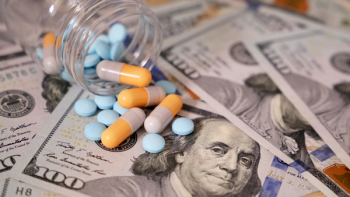
- Pharmaceutical Executive-03-28-2007
- Volume 0
- Issue 0
GSK Builds HIV Community
Changing nature of disease, market pressures shape how companies communicate about HIV drugs.
GlaxoSmithKline last week launched a new program to provide educational information to the 60 largest AIDS service organizations (ASOs) in the US. As HIV patients with access to treatment are living for many years--and HIV becomes more of a chronic than an acutely deadly disease--a crowded field of companies are looking for new ways to reach new patients and build brand loyalty.
The initiative--dubbed "A Positive Life"--complements GSK's Positive Action umbrella program for HIV education. The firm last year spent more than $39 million on public health programs, including HIV outreach in 17 countries.
According to Marc Meachem, manager of communications, the largely unbranded program is a comprehensive "HIV 101" course--with basic information about prevention, testing positive, general health, care giving, and HIV treatment, including different drug classes, how combo therapy works, and the importance of compliance. The British drug giant currently markets six of the 27 available HIV drugs.
Meachem added that since chronic care is a growing focus of treating HIV patients, a significant portion of the program centers on living well with HIV over the long term. The initiative includes print material for ASOs, a Web site at APositiveLife.com, and specially trained clinicians who can speak to patients about the disease.
GSK is promoting the program through media relations with reporters who cover HIV. "One of the most compelling things is patient stories," Meachem said, describing the site. "Some of these personal stories are very meaningful."
While early industry efforts focused on raising awareness--driving home messages like "get tested"--newer programs are concentrating on building community, especially as stigmas are breaking down and the nature of the disease has changed.
Market factors might also be driving the shift. Where the HIV sector once had a comfortable compounded annual growth rate of 13.3 percent, growth is expected to slow to 4.1 percent by 2015, according to research firm Datamonitor. The loss of patent protection on older antiretrovirals and increased competition are two of the main factors squeezing companies in this space.
At GSK, the HIV franchise brought in $2.9 billion last year, down 1 percent since 2005. The company was particularly hard hit in the United States, where its portfolio of therapies posted a loss of seven percent--mainly due to decreased revenue from lead product Combivir (lamivudine/zidovudine, down 9 percent to $1 billion) and Epivir (lamivudine, down 21 percent to $396 million).
Yet GSK boasted double-digit growth for its newcomers, including Epzicom (abacavir/lamivudine, more than doubling to $473 million) and Lexiva (fosamprenavir, up 18 percent to $257 million). It also has three compounds in development, including an early-stage vaccine.
Articles in this issue
over 18 years ago
Getting Their Fixover 18 years ago
The Most Convincing Drugs on the WebNewsletter
Lead with insight with the Pharmaceutical Executive newsletter, featuring strategic analysis, leadership trends, and market intelligence for biopharma decision-makers.





